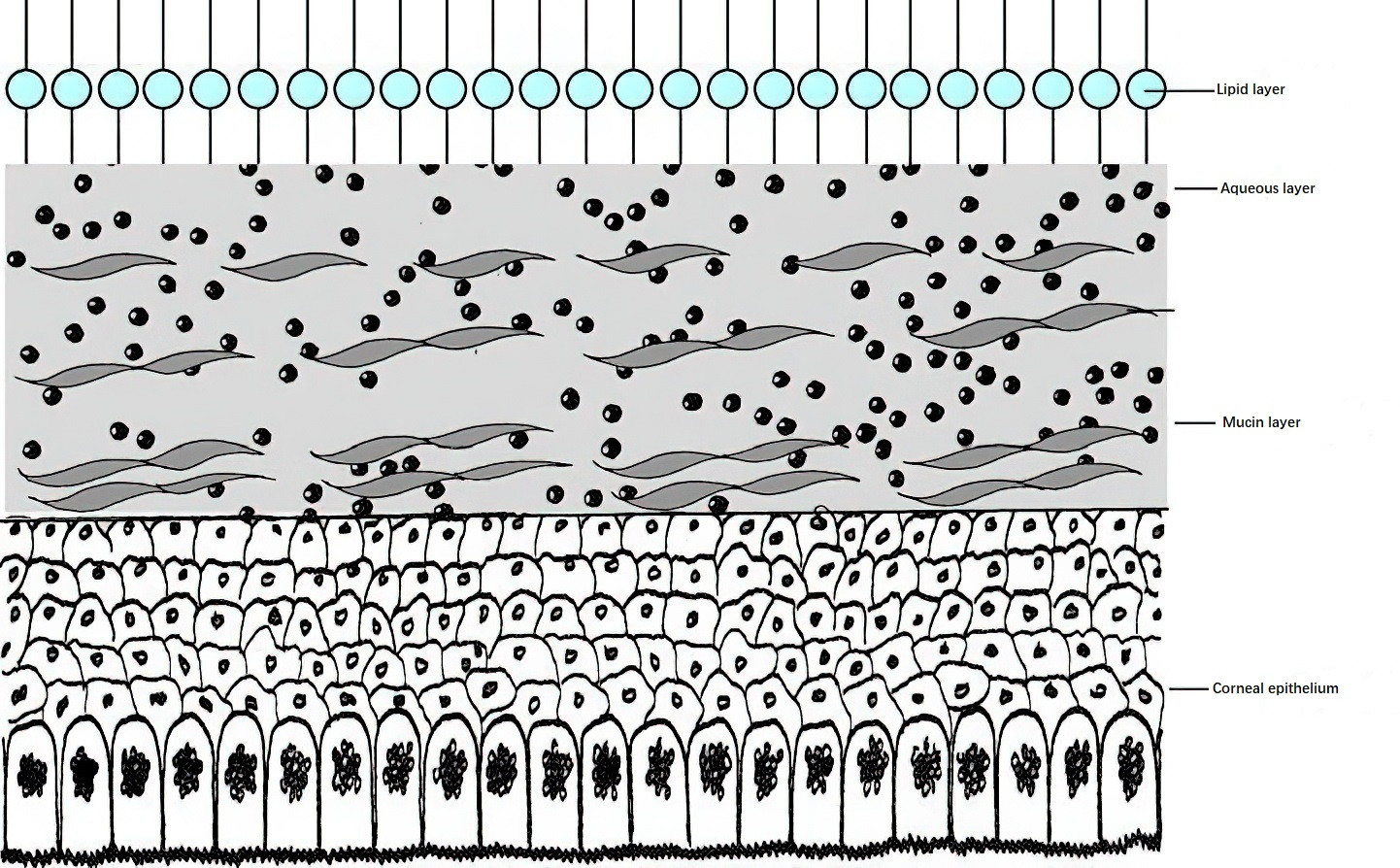The tear film is a liquid layer covering the anterior surface of the eyeball and is an essential component of the ocular surface structure. It is divided into the precorneal tear film (on the corneal surface) and the preconjunctival tear film (on the conjunctival surface). Traditionally, the tear film has been understood to consist of three layers: the superficial lipid layer, primarily formed by secretions from the meibomian glands; the middle aqueous layer, primarily formed by secretions from the lacrimal gland and accessory lacrimal glands; and the innermost mucin layer, primarily formed by secretions from ocular surface epithelial cells and conjunctival goblet cells. However, more recent understanding suggests that mucin and aqueous components are mixed, with mucin being more concentrated at the base, and there is no distinct layering between the two. The tear film has a thickness of approximately 7 µm and a total volume of about 7.4 µl, with a renewal rate of 12%–16% per minute. Its pH ranges from 6.5 to 7.6, and its osmolarity is between 296 and 308 mOsm/L. It contains components such as immunoglobulin A (IgA), lysozyme, β-lysin, lactoferrin, electrolytes, and other molecules.

Figure 1 Schematic diagram of the tear film
The physiological functions of the tear film include lubricating the ocular surface, preventing dryness of the cornea and conjunctiva, maintaining the optical properties of the cornea, supplying oxygen to the cornea, and washing away as well as protecting the ocular surface from foreign bodies and microorganisms.
Changes in the composition of the tear film, irregularities on the ocular surface, or disturbances in the anatomical positioning or movement of the eyelid relative to the eyeball can result in qualitative or quantitative abnormalities of the tear film, leading to tear film dysfunction.